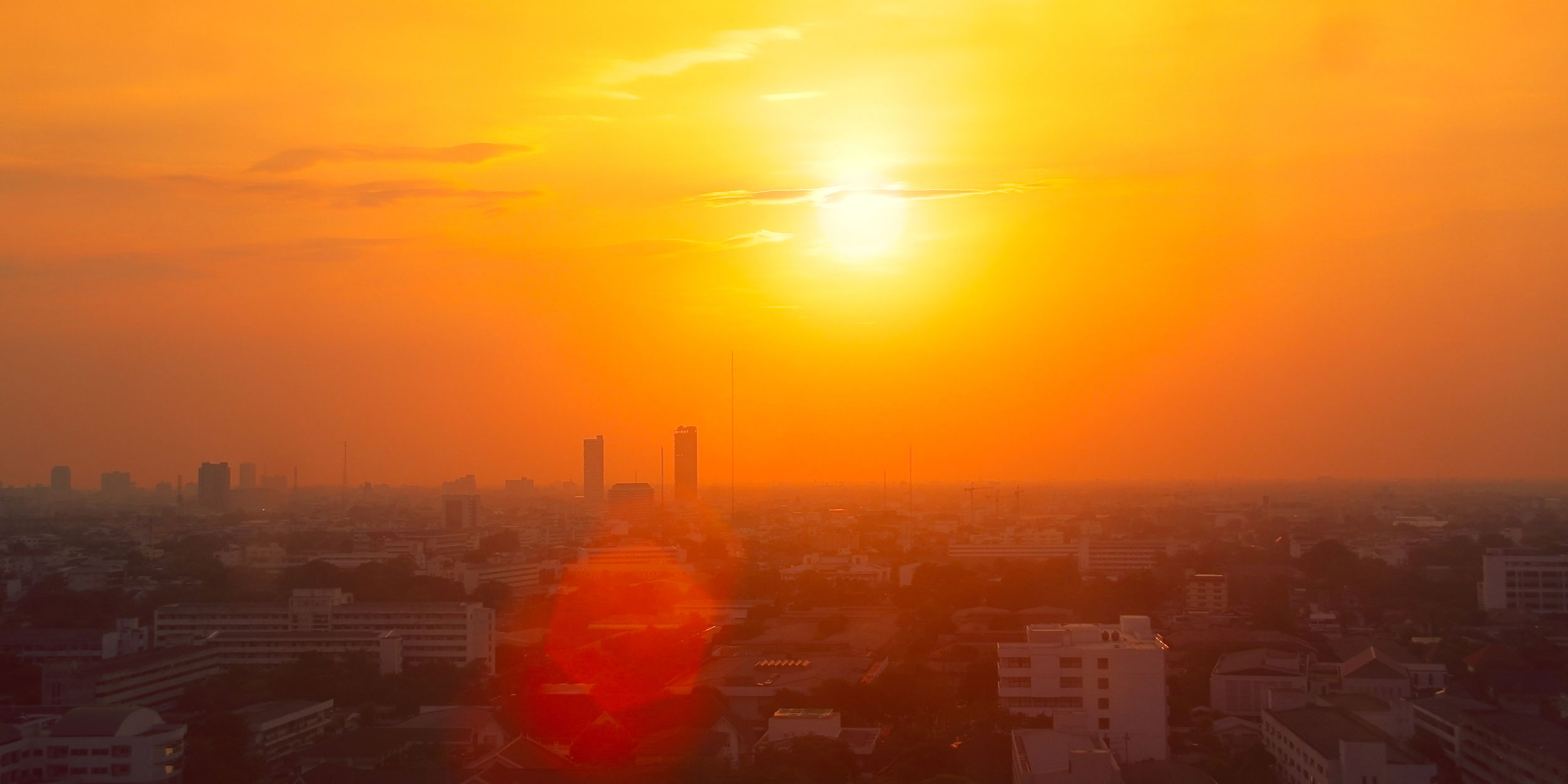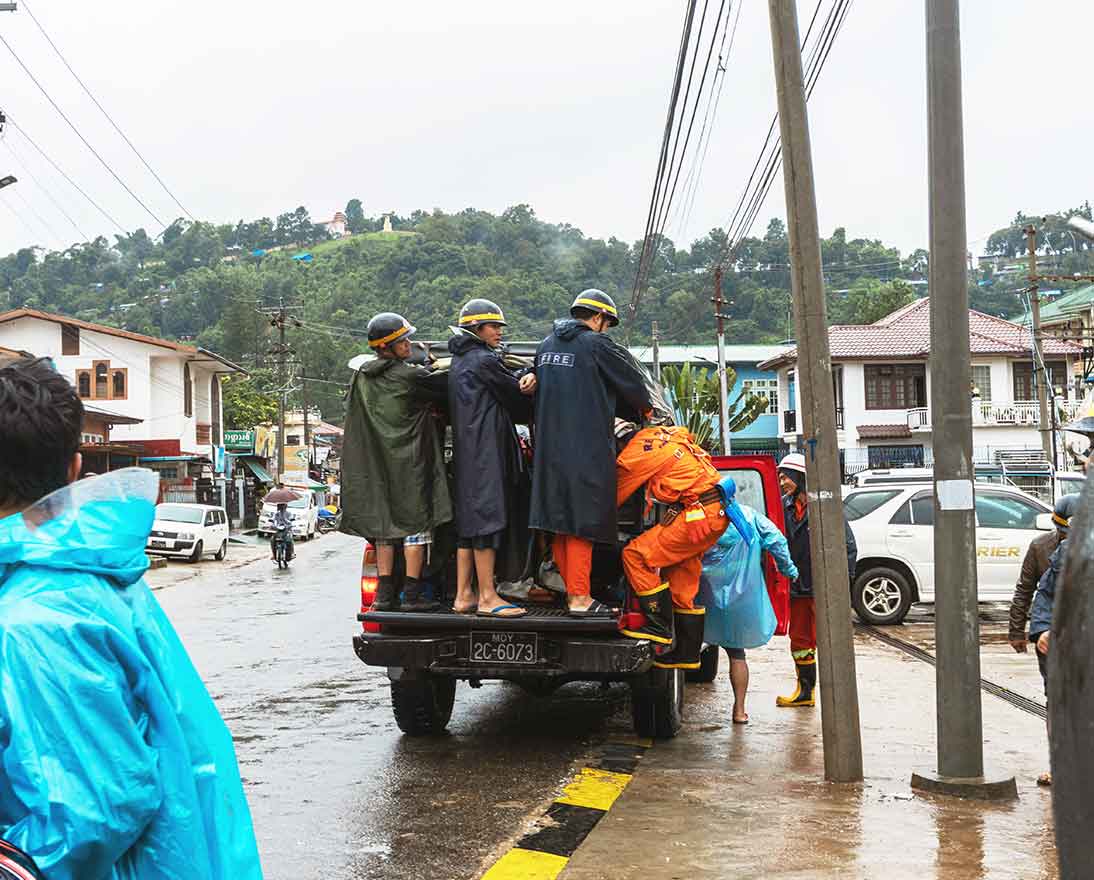The growing threat of extreme heat on our cities
Natural hazardsArticleJune 8, 20227 min read
Global warming and the urban heat island effect mean more global cities are under threat from extreme temperatures. With heat waves projected to increase in frequency, intensity and duration, how can cities respond?
On January 13, 2022, Australia equaled its hottest day on record after Onslow, a remote town on the coast of Western Australia, recorded temperatures of 50.7C (123.3F). But it is not just Australia’s remote regions that are experiencing extreme heat – its major cities are becoming increasingly concerned about rising temperatures.
One of those urban areas is Western Sydney, which the Australian Institute describes as “among the most affected regions of Australia when it comes to extreme heat.” The number of days per year over 35°C (95°F) has increased from an average of 9.5 in the 1970s to 15.4 in the last decade. But by 2090, Western Sydney could experience up to 46 days every year over 35°C – with up to 58 days per year in some suburbs.
At 35°C, the body’s ability to regulate its internal temperature is compromised. This can result in heat cramps, heat exhaustion, heatstroke and, ultimately, death. According to the World Health Organization, more than 166,000 people died due to heat waves between 1998-2017. In both Australia and the U.S., for example, extreme heat is responsible for more deaths than any other natural hazard.
Even relatively cooler regions are at risk due to their lack of experience with extreme heat. In the UK, heat waves caused more than 2,500 deaths in summer 2020, while the 2010 heat wave in Moscow led to 11,000 deaths. A heat wave that swept Europe in the summer of 2003 was the deadliest natural disaster to hit the continent in 50 years. The death toll exceeded 30,000 – with half of that figure accounted by France.
These events could become more common. The heat wave that affected the western side of North America during 2021 showed that cities located in northern latitudes are at risk. For instance, the town of Lytton, British Columbia, set a new Canadian temperature record of 49.6°C (121°F) despite being situated just north of 50 degrees latitude.
What is a heat wave?
A heat wave is defined by the World Meteorological Organization as a period of five or more consecutive days where the daily maximum temperature exceeds the average maximum by 5°C (9°F) or more. Some countries have different definitions that consider humidity, which impedes the body’s ability to cool off by sweating.
Urban heat island effect
One reason Western Sydney is disproportionately affected by heat is that it is located far from the cooling breeze of the sea. But it also suffers from the urban heat island effect – a phenomenon where cities are warmer than surrounding rural areas due to the built environment and heat generated from vehicles and other sources.
“Western Sydney is a highly urbanized environment covered in concrete and asphalt from its industrial developments, roads, housing and parking lots. This absorbs and retains an immense amount of heat, which exacerbates the urban heat island effect,” explains Raymond Hui, Principal Risk Engineer for Natural Hazards & Climate Resilience, Zurich Australia and APAC. “The problem is made worse as the cooling tree canopy has been cleared to make way for further high-density development.”
The problem goes way beyond Sydney. Delhi, for instance, has been suffering with intense heat waves during 2022 with temperatures hitting a record 49.2°C (120.5°F) in parts of the Indian capital in March. In fact, there are more than 350 cities around the world home to 200 million people that experience summer temperature highs over 35°C. Due to global warming, these figures are expected to rise to 970 cities with 1.6 billion people by 2050.
Heat waves put pressure on essential services such as health, water sanitation, transport infrastructure and utilities. “One example is power failure resulting in shortages or even blackouts,” says Amar Rahman, Global Head of Climate Resilience at Zurich Insurance Group.
“The entire power infrastructure loses efficiency during periods of extreme heat, especially if the power plant requires water for cooling from rivers that may be both drying up and warming. Power transmission lines have a diminished capacity, and equipment like transformers and inverters see a higher failure rate. But at the same time, electricity demand soars as millions of air conditioners blast at full force,” explains Rahman.
Heat waves are also an economic drain as they reduce productivity, particularly in predominantly outdoor industries like construction or strenuous industries such as manufacturing. It is estimated this causes an 8 to 22 percent reduction in output that will cost the global economy USD 2.5 trillion a year by 2030.
Hot city adaptation
So, what’s the answer? “Adaptation,” says Rahman. “Cities need to plan for heat waves and educate their residents about how to stay safe during extreme heat. Businesses need to adapt their buildings, infrastructure and working hours to higher temperatures. This may be costly but retrofitting buildings and upgrading equipment will not only reduce demand on infrastructure, but also protect the workforce.”
Many cities are now adapting for extreme heat. Some have regulations to ensure buildings are constructed with heat reflective materials and greater insulation to optimize air-conditioning. Others are planting more greenery, replacing tarmac from playgrounds with less heat absorbent materials, or introducing “cool roofs” – which often simply requires painting a roof white to reflect heat.
Berlin, for example, aims to become a “Sponge City”. It is replacing hard surfaces with green space and water-permeable surfaces to combat the urban heat island effect while also building flood resilience. It plans to introduce more trees, urban wetlands, shaded sidewalks, heat-resistant road surfaces, light-colored buildings that reflect heat, and living rooftops covered in moss and grasses.
Preparedness is also important. Many of India’s cities, such as Ahmedabad, have a “Heat Action Plan” that incorporates adaptive measures, a health care response, awareness campaigns and regulations on outdoor working hours, for instance.
Following the 2003 heat wave, France introduced a national heat wave plan comprising forecasts, warnings and education, such as reminding people to drink water and avoid outdoor exercise. It can quickly mobilize the country – from schools to local pharmacies – to respond, for example, by ensuring senior care homes provide a “cool room” for residents.
But not all cities are taking appropriate action. In a 2021 survey of 812 global cities by CDP, it found that 43 percent of cities do not have an adaptation plan to keep people and critical infrastructure safe from climate threats. With one in four cities citing budgetary restrictions as a barrier to adaptation.
One of the challenges is that – unlike emissions action – the benefits of adaptation and resilience do not provide an immediate return. Whereas investment in renewable energy, such as solar panels, or energy efficiency projects can quickly provide savings.
What’s in a name?
One of the biggest challenges remains awareness. “Heat waves are highly dangerous natural hazards, but they rarely receive adequate attention as their death tolls and destruction are not always immediately obvious,” says Belinda Bates, Senior Manager for Zurich Climate Resilience.
“We categorize and name hurricanes and typhoons to communicate their danger and severity. In parts of the world, like California, people prepare for the next big earthquake. But we don’t have the same level of awareness and preparedness for heat waves. That needs to change,” adds Bates.
For Western Sydney, some big decisions lie in wait as temperatures continue to rise. From investing in adaptation and preparedness to even naming heat waves or introducing a heat-risk rating and warming system as Australia has done with bushfires.
But radical and urgent action must be taken. Otherwise, Western Sydney, along with hundreds of urban centers around the world, might become undesirable and potentially uninhabitable.
Climate Resilience
Our Climate Resilience experts help you identify and manage climate risks, and prepare you for climate reporting.



